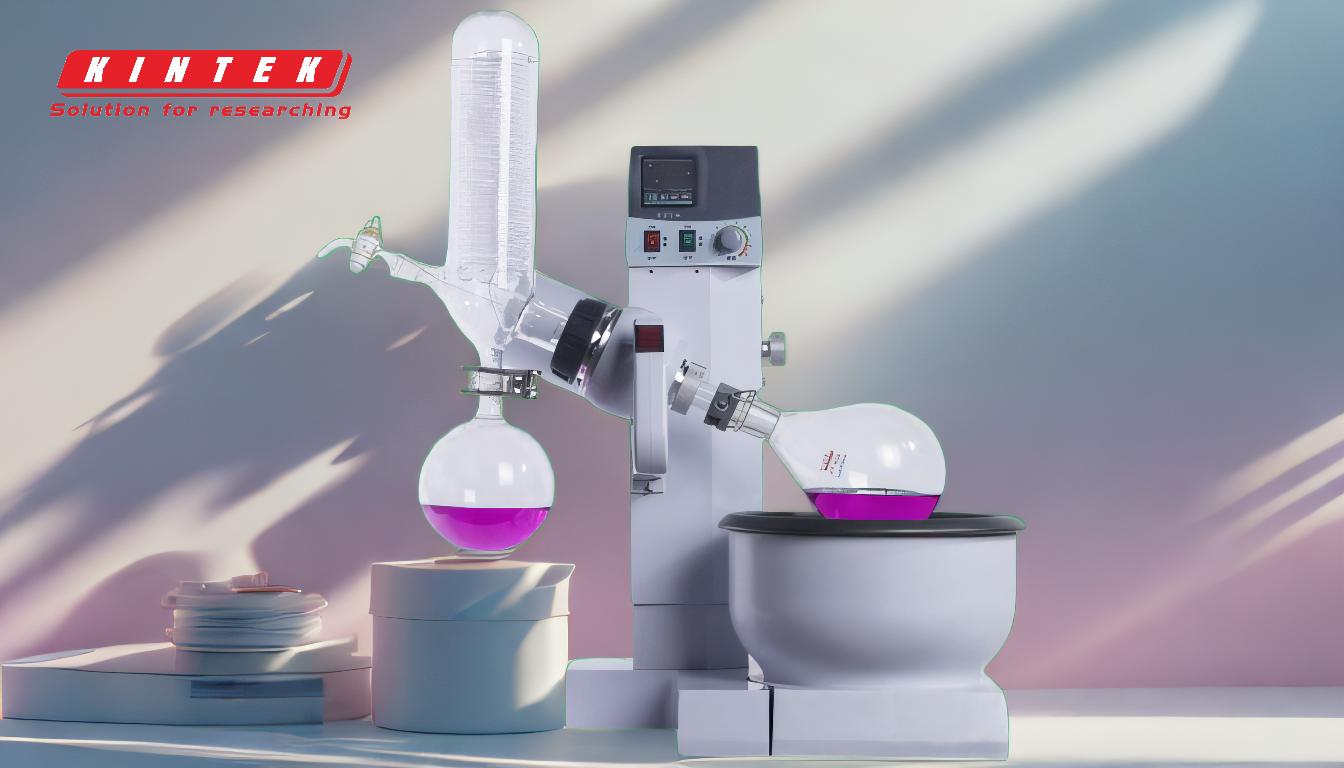A rotary evaporator (rotovap) can indeed evaporate water, but its efficiency depends on the conditions under which it operates. A rotovap is designed to remove solvents from samples through evaporation, typically under reduced pressure, which lowers the boiling point of the solvent. While water has a relatively high boiling point (100°C at standard atmospheric pressure), reducing the pressure in the rotovap system allows water to evaporate at lower temperatures. However, compared to organic solvents, water evaporation is slower due to its higher latent heat of vaporization. The rotovap's effectiveness for water removal also depends on factors like the heating bath temperature, vacuum level, and rotation speed. For large volumes of water, alternative methods like freeze-drying or conventional distillation might be more efficient.
Key Points Explained:

-
Principle of Operation:
- A rotovap works by reducing the pressure in the system, which lowers the boiling point of the solvent (in this case, water). This allows evaporation to occur at lower temperatures, minimizing the risk of thermal degradation.
- The rotation of the flask increases the surface area of the liquid, promoting faster and more uniform evaporation.
-
Suitability for Water Evaporation:
- Water can be evaporated using a rotovap, but it is less efficient compared to organic solvents due to water's high boiling point and latent heat of vaporization.
- The process is slower and may require higher heating bath temperatures or stronger vacuum levels to achieve effective evaporation.
-
Factors Affecting Efficiency:
- Vacuum Level: A stronger vacuum lowers the boiling point of water, making evaporation easier.
- Heating Bath Temperature: Higher temperatures in the water bath can accelerate evaporation but must be carefully controlled to avoid overheating the sample.
- Rotation Speed: Faster rotation increases the surface area of the liquid, improving evaporation rates.
-
Comparison with Other Solvents:
- Organic solvents (e.g., ethanol, acetone) evaporate more quickly in a rotovap due to their lower boiling points and latent heat of vaporization.
- Water requires more energy and time to evaporate under the same conditions.
-
Practical Considerations:
- For small volumes of water, a rotovap can be effective, especially if the goal is to avoid high temperatures.
- For large volumes of water, alternative methods like freeze-drying or conventional distillation are often more practical and efficient.
-
Applications:
- Rotovaps are commonly used in laboratories for removing solvents from chemical mixtures, but they can also be adapted for water removal in specific applications, such as concentrating aqueous solutions or isolating water-soluble compounds.
-
Limitations:
- The slow evaporation rate of water in a rotovap may make it less suitable for high-throughput or large-scale applications.
- The equipment must be properly maintained to handle the potential for water condensation in the vacuum system.
In summary, while a rotovap can evaporate water, its efficiency is limited compared to other solvents. Proper adjustment of operating conditions and consideration of alternative methods are essential for optimal results.
Summary Table:
| Aspect | Details |
|---|---|
| Principle of Operation | Reduces pressure to lower boiling point; rotation increases surface area. |
| Suitability for Water | Less efficient than organic solvents due to high boiling point and heat. |
| Key Factors | Vacuum level, heating bath temperature, and rotation speed affect efficiency. |
| Comparison | Organic solvents evaporate faster; water requires more energy and time. |
| Practical Use | Effective for small volumes; alternatives like freeze-drying for large volumes. |
| Applications | Used in labs for solvent removal; adaptable for water in specific cases. |
| Limitations | Slow evaporation; not ideal for high-throughput or large-scale applications. |
Need help optimizing your rotary evaporator for water evaporation? Contact our experts today for tailored solutions!




















